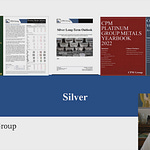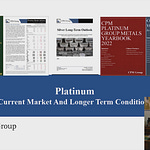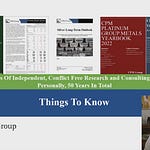Jeffrey Christian, of CPM Group, provides a compelling presentation exploring the historical origins and practical role of the Federal Reserve. Jeff reflects on the importance of understanding central banking for investors, especially those active in precious metals markets.
The Fed's Dual Mandate
Christian emphasizes the Fed’s two primary objectives: maximizing employment and controlling inflation. These responsibilities, given by Congress at the Fed’s creation, aim to stabilize economic activity and maintain a healthy financial environment. He clarifies common misconceptions about the Fed's independence, pointing out how fiscal policies and government deficits can sometimes complicate or undermine its mandate.
The Fed in Financial Crises
One critical aspect of the presentation was the Fed's role during financial crises. Christian points out how the Fed's asset base significantly expanded during both the 2008 financial crisis and the 2020 pandemic crisis, enabling it to support the economy through massive purchases of treasury securities. Despite common fears about the Fed's limits, he notes that theoretically, it can continually expand its balance sheet—though not without potential consequences for market confidence and stability.
Precious Metals Market Implications
Christian then connects these monetary dynamics directly to precious metals markets, highlighting why understanding the Fed matters to investors. He provides an updated market outlook, noting that gold continues to trade in a volatile but upward trajectory, driven by investor demand amid economic and political uncertainties. Silver, platinum, and palladium are also discussed, with Christian predicting continued volatility and a cautious outlook influenced by industry-specific factors.
Why Investors Should Care
Christian underscores that ignoring monetary policy and economic fundamentals is a risk investors can't afford, particularly those involved in precious metals. He stresses that market performance for gold, silver, and related commodities cannot be understood without a solid grasp of central bank policies and broader economic trends.
In conclusion, Jeffrey Christian’s detailed yet accessible exploration of the Fed provides essential insights for investors looking to navigate the complex interplay between central banking, economic stability, and precious metals investments.












Share this post